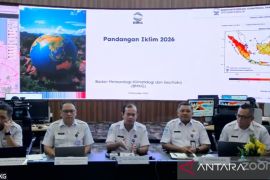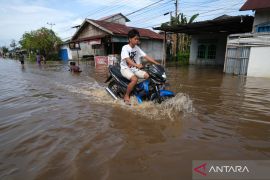"This condition is influenced by climate change and global warming," Karnawati said during an online discussion on climate change on Thursday.
Based on monitoring carried by BMKG, during 2015-2017, average rainfall was recorded between 120 and 137 mm, but by January, 2020, the rain intensity reached 337 mm, she said.
The duration of rain in a day has also become longer due to the impact of climate change triggered by human activities, she observed.
Related news: Extreme weather forecast in Indonesian regions on Feb 10-16: BMKG
El Nino, which induces prolonged drought, and La Nina, which triggers very wet rainy seasons, are developing more frequently, she said. In 1981, the El Nino or La Nino cycles were repeating every 5-6 years, but by 2020, the cycles are repeating every 2-3 years, she added.
Meanwhile, air pollution due to carbon dioxide (CO2) emissions from household appliances in 2004 was around 272 bpm, but by 2020, it increased to 400 bpm, she noted.
Based on a BMKG survey in 2015, the agency estimated that the ice at the top of Mount Jayawijaya, Papua, would run out by 2020 due to global warming. As a consequence, cyclonic winds could increase and potentially cause tornadoes.
To anticipate and mitigate the impact of natural phenomena, the BMKG is educating farmers and fishermen to adapt to weather and climate change to prevent harvest failure or fish catch decline, Karnawati said.
Related news: BMKG projects downpour in Banten, Jakarta, West Java, Central Java
Translator: Suriani Mappong, Fardah
Editor: Rahmad Nasution
Copyright © ANTARA 2021












